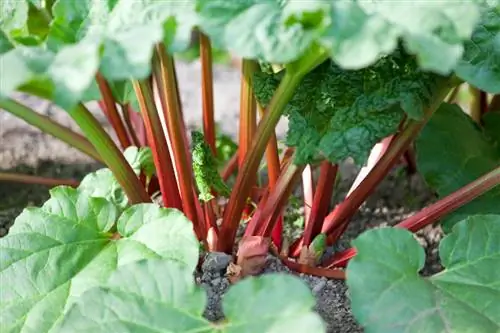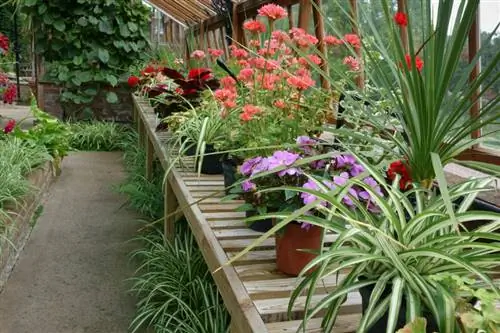- Author admin [email protected].
- Public 2023-12-16 16:46.
- Last modified 2025-06-01 06:02.
You can always read the advice that lavender needs to be fertilized every two weeks - ideally with conventional flower fertilizer. However, this information - as widespread as it is - is incorrect. In its Mediterranean homeland, lavender thrives on very poor, often stony soils. Regular fertilization - especially with nitrogen-containing fertilizers - only ensures that the plant appears to be growing splendidly at first, but then dies due to over-fertilization.

How often should you fertilize lavender?
Lavender should be fertilized in the garden a maximum of once or twice a year, preferably at the beginning of the growing season (March/April) and possibly also in June/July. Use a low-nitrogen fertilizer and lime. Potted lavender requires more intensive care, including occasional fertilizer.
Prepare soil before planting
In order for lavender to thrive in your garden, it needs the conditions known from its homeland. In addition to a sunny location, this also requires a well-drained, preferably sandy soil. The plant also grows well on stony surfaces, which is why seedlings can often be found in the cracks between paving stones. Heavy, clayey soils are not suitable for planting lavender and should be improved accordingly beforehand. If you have garden soil like this, you can loosen it up with plenty of sand, expanded clay, brick chippings and the like. This is particularly important for the drainage of rainwater, because lavender does not like waterlogging. The Mediterranean plant also does not like acidic soils, as it prefers an alkaline pH value. But these substrates can also usually be improved with primary rock powder (€19.00 on Amazon) or clay powder. You can also work a little compost or manure and lime into the soil before planting - unless you want to plant lavender, then do without the lime.
Fertilize planted lavender only once a year
Lavender planted in the garden basically needs to be fertilized a maximum of once or twice a year. The broadly spreading and very deep roots of lavender extract sufficient nutrients from the soil. Fertilize the garden lavender at most at the beginning of the growing season - i.e. in March / April - with a little lime and a low-nitrogen fertilizer. Nitrogen - which is also found in stable manure, guano and many commercially available flower fertilizers - only promotes the plant's baldness and should therefore be used as sparingly as possible. You should also avoid using mulching material such as bark mulch because it stores too much moisture. You can keep rampant weeds at bay by planting the lavender in a gravel bed.
Potted lavender needs more intensive care
In contrast to garden lavender, potted lavender requires somewhat more intensive care, which also includes more frequent watering (in principle, planted lavender does not need to be watered at all) and occasional fertilizer applications. But here too you don't have to fertilize every two weeks, as one dose at the beginning of the growing season and another in June / July is usually enough. In addition, potted lavender should be transplanted into fresh substrate and into a larger container at least once a year so that the plant has enough space. Lavender that is crammed into a pot that is too small often does not bloom or only blooms very poorly.
Tips & Tricks
The roots of lavender need space and lots of air. Keep the soil around the plant loose and pull weeds in a timely manner. You can also spread pebbles or limestone on the ground - just not with lavender, which does not tolerate lime.






